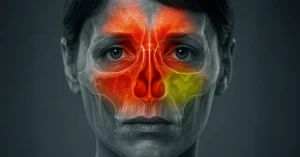Blood Pressure Calculator
Measure your blood pressure and pulse now and compare the results
Home » Blood Pressure Calculator

Calculate your blood pressure and pulse
Using our calculator, you can quickly check whether your values are within normal limits and learn how to take care of your heart.
Blood Pressure Chart
According to current ESC/ESH guidelines
Normal Heart Rate Values
What is blood pressure and how are the values interpreted?
Blood pressure is the force with which blood flows through the blood vessels, more specifically the pressure exerted on the arterial walls. It is expressed by two values:
- Systolic blood pressure (first value): the pressure in the arteries when the heart contracts and pumps blood;
- Diastolic blood pressure (second value): the pressure in the arteries when the heart is at rest, between two beats.
An example of a display is: 120/80 mmHg, where 120 is the systolic pressure and 80 is the diastolic pressure.
Why is it important to monitor your blood pressure?
High blood pressure (HBP) is a common condition, often without visible symptoms. For this reason, it is also called the “silent killer”. Many people may have high blood pressure without knowing it, and if left untreated, high blood pressure can lead to:
- Cardiovascular disease (heart attack, heart failure);
- Strokes;
- Kidney damage;
- Vision loss.
On the other hand, low blood pressure (hypotension) can cause dizziness, fainting, or weakness.
What is normal blood pressure depending on age?
Normal blood pressure values may vary slightly depending on age:
- Young adults (18–40 years): between 90/60 mmHg and 120/80 mmHg;
- People aged 40–60: values may rise slightly, but ideally should not exceed 130/85 mmHg;
- Seniors (60+ years): blood pressure up to 140/90 mmHg may be considered acceptable, but should be monitored.
It is important to know that pulse and normal blood pressure are assessed together, because an elevated or low pulse can signal hidden problems, even when blood pressure seems “okay.”

Pulse and connection to blood pressure
The pulse is the number of heartbeats per minute (bpm). Normal pulse values:
- Normal: 60–100 bpm;
- Bradycardia: < 60 bpm (pulse too low);
- Tachycardia: > 100 bpm (pulse too high).
Blood pressure and pulse should be interpreted together for a complete picture of cardiovascular health.
Low blood pressure – what does it mean and what should you do?
Low blood pressure (hypotension) occurs when readings are below 90/60 mmHg. It may be normal in some people (especially young people or athletes), but it can cause dizziness, fatigue, or fainting.
What to do when you have low blood pressure?
- Stay hydrated;
- Avoid standing for long periods of time;
- Get up slowly from bed or a chair;
- You can eat salty foods (in moderation);
- If symptoms persist, consult your doctor.
What time should blood pressure be measured?
Ideally, you should measure your blood pressure:
- In the morning, before eating or drinking coffee;
- And in the evening, but not immediately after eating or physical exertion.
Values may vary throughout the day, and for an accurate picture, it is best to take several measurements on different days.
Why does blood pressure rise in the evening?
High blood pressure in the evening can occur for several reasons:
- Stress accumulated during the day;
- Caffeine or alcohol consumption;
- Sedentary lifestyle;
- Heavy or salty meals in the evening;
- Sleep disorders or apnea.
If you frequently notice high blood pressure in the evening, talk to a specialist—it could be a sign of hypertension.








